Unlocking Muscle Growth: The Crucial Role of the Eccentric Phase in Exercise
When it comes to building muscle, most fitness enthusiasts and athletes focus on the concentric phase of an exercise. This is the part of a movement where you lift or push the weight against gravity. It's when you curl a dumbbell upward during a bicep curl, push the barbell during a bench press, or rise during a squat.
However, in the pursuit of maximum muscle growth, there's another, often underestimated, phase that plays a critical role: the eccentric phase. In this article, we'll explore the importance of controlling the eccentric phase of an exercise and how it can be a game-changer in your muscle-building journey.
Understanding the Eccentric Phase
The eccentric phase, often referred to as the "negative" or "lowering" phase of an exercise, is the part of a movement where you resist gravity and lower the weight back to its starting position. If we take the bicep curl as an example, this is when you lower the dumbbell back to your thigh after curling it up. In the bench press, it's the moment when the bar is descending towards your chest. And in the squat, it's when you're lowering your body toward the ground.
Muscle Activation During the Eccentric Phase
Many people assume that the concentric phase is where the real work is done, and the eccentric phase is just a passive return to the starting position. However, research and practical experience reveal a different story. During the eccentric phase, your muscles are actively engaged, and they are subjected to high levels of tension and stress.
Muscle Fiber Recruitment
The eccentric phase recruits a different set of muscle fibers than the concentric phase. This additional recruitment leads to more muscle fibers being used during the entire exercise, which can stimulate greater muscle growth.
Time Under Tension (TUT)
The eccentric phase increases the time under tension for your muscles. This extended TUT is a key factor in muscle hypertrophy, as it places more stress on the muscle fibers, leading to growth.
Control and Stability
During the eccentric phase, you need to control the weight as you lower it. This requires strength, balance, and stability. Improved control can translate to better overall strength and muscle development.
Damage and Repair
The eccentric phase creates more micro-tears in muscle fibers compared to the concentric phase. As these fibers repair and grow back stronger, muscle hypertrophy occurs.
4 Benefits of Focusing on the Eccentric Phase
Now that we understand the significance of the eccentric phase let's delve into the benefits of giving it more attention in your training regimen:
1. Increased Muscle Hypertrophy
By maximizing the use of both concentric and eccentric phases, you can stimulate more muscle growth. Researchers found that lifters who focused on lowering the loads and controlling the tension throughout the eccentric phase saw more significant increases in lean muscle mass growth as compared to concentric-focused only lifting (not controlling the weight down.
2. Strength Development
The eccentric phase builds strength, not just in the specific movement but in functional and everyday activities as well. By controlling the weight during the eccentric phase, you develop better strength and stability. Researchers found that slower eccentrics leg to greater increases in 1RM. The takeaway here is that you can train with 80-90% loads, and increase intensity bu lowering the loads slowly to help increase strength, rather than only focusing on lifting the weight.
3. Injury Prevention
Focusing on the eccentric phase can help prevent injuries. It enhances joint stability and muscle control, reducing the risk of strains and tears.
4. Plateau-Breaker
If you've hit a plateau in your muscle-building journey, incorporating more emphasis on the eccentric phase can be a game-changer. It challenges your muscles in a new way and can break through stagnation.
5. Balanced Development
Concentrating on the eccentric phase ensures balanced muscle development. Neglecting this phase can result in imbalances and potential injury risks.
How to Optimize the Eccentric Phase
To make the most of the eccentric phase in your workouts, consider these strategies:
1. Slow It Down
Control the lowering of the weight. Aim for a tempo that's around 2-4 seconds during the eccentric phase. This tempo allows for more muscle tension and time under tension.
2. Mind-Muscle Connection
Focus on the muscle you're working, and feel the stretch and tension during the eccentric phase. A strong mind-muscle connection can lead to more effective muscle recruitment.
3. Use Eccentric-Emphasized Exercises
Some exercises inherently emphasize the eccentric phase, like the Romanian deadlift. Including these in your routine can be beneficial.
4. Progressive Overload
Just as with the concentric phase, progressively overload your muscles during the eccentric phase by increasing the weight or resistance over time.
Common Misconceptions
There are a few common misconceptions about the eccentric phase that need to be addressed:
Eccentric Doesn't Equal Easier
Some believe that the eccentric phase is easier or less effective than the concentric phase. In reality, it's equally important and often more challenging.
Neglecting It Is a Time-Saver
Rushing through the eccentric phase to focus on the concentric part of the movement might seem like a time-saver, but it's a mistake if you're aiming for optimal muscle growth.
It's Not Just for Advanced Lifters
The benefits of the eccentric phase are applicable to individuals of all fitness levels, not just advanced lifters. Beginners can also gain from proper emphasis on this phase.
Final Thoughts
In the pursuit of maximum muscle growth, don't overlook the importance of the eccentric phase of exercise. It's not just a return to the starting position but a crucial component of your workout.
By controlling the eccentric phase, you can unlock greater muscle hypertrophy, strength, and overall progress in your fitness journey. So, the next time you're at the gym or in your home workout space, remember that building muscle is not just about lifting the weight but controlling it as you lower it down.
